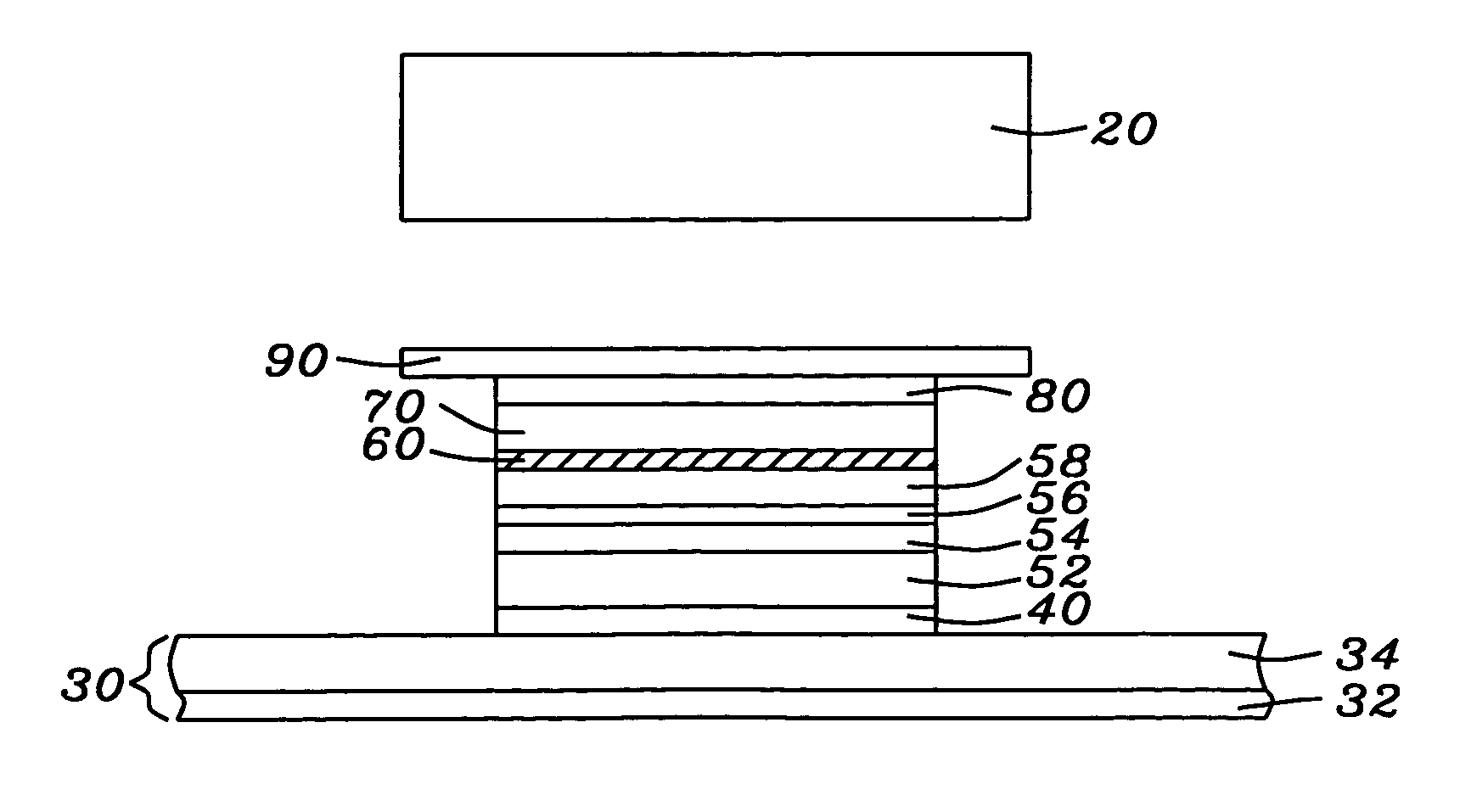Magnetic random access memory array with coupled soft adjacent magnetic layer
a magnetic random access memory and adjacent magnetic layer technology, applied in the direction of instruments, organic chemistry, organic active ingredients, etc., can solve the problems of increasing the size of the switching field, bringing with it its own problems, and causing significant problems, so as to facilitate the reorientation of magnetic moments and increase the magnetic switching volume of the cell.
- Summary
- Abstract
- Description
- Claims
- Application Information
AI Technical Summary
Benefits of technology
Problems solved by technology
Method used
Image
Examples
Embodiment Construction
[0021]The preferred embodiment of the present invention teaches a method of forming an MTJ MRAM cell of substantially circular cross-section or an MRAM array of such cells, in which the required switching current in the bit line can be reduced by the addition of a thin adjacent soft magnetic layer beneath the bit line which couples magnetostatically to a proximal free layer.
[0022]Referring first to FIG. 2 there is shown in a schematic overhead view in the xy-plane, the general layout of the MRAM cell of the present invention. The MTJ element (10), of substantially circular or low aspect ratio (20), which is above the cell and runs in the y-direction, and a bit line (30), which is below the cell and runs in a direction perpendicular to the write word line (the x-direction). The combination of the MTJ element and the write word and bit lines which access and switch the cell form an MTJ MRAM cell. As will be shown in the next figure, a soft magnetic layer is formed on the bottom surfac...
PUM
| Property | Measurement | Unit |
|---|---|---|
| thickness | aaaaa | aaaaa |
| thickness | aaaaa | aaaaa |
| thickness | aaaaa | aaaaa |
Abstract
Description
Claims
Application Information
 Login to View More
Login to View More - R&D
- Intellectual Property
- Life Sciences
- Materials
- Tech Scout
- Unparalleled Data Quality
- Higher Quality Content
- 60% Fewer Hallucinations
Browse by: Latest US Patents, China's latest patents, Technical Efficacy Thesaurus, Application Domain, Technology Topic, Popular Technical Reports.
© 2025 PatSnap. All rights reserved.Legal|Privacy policy|Modern Slavery Act Transparency Statement|Sitemap|About US| Contact US: help@patsnap.com


